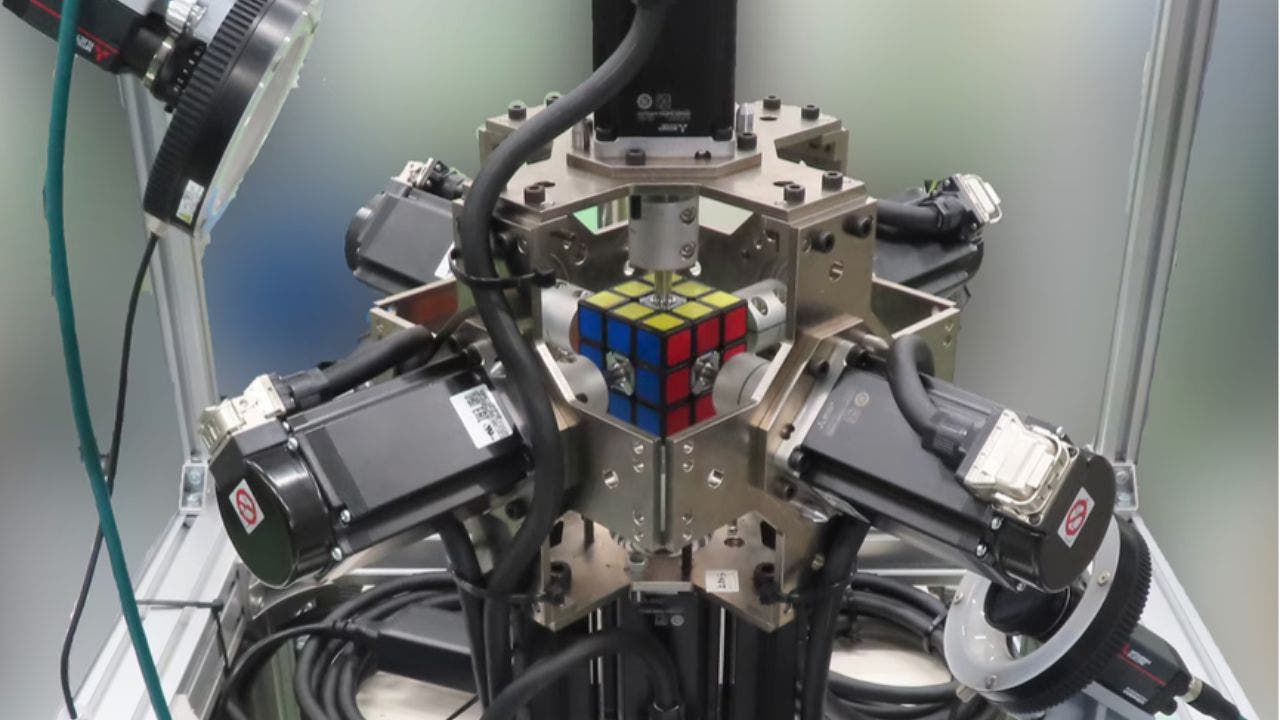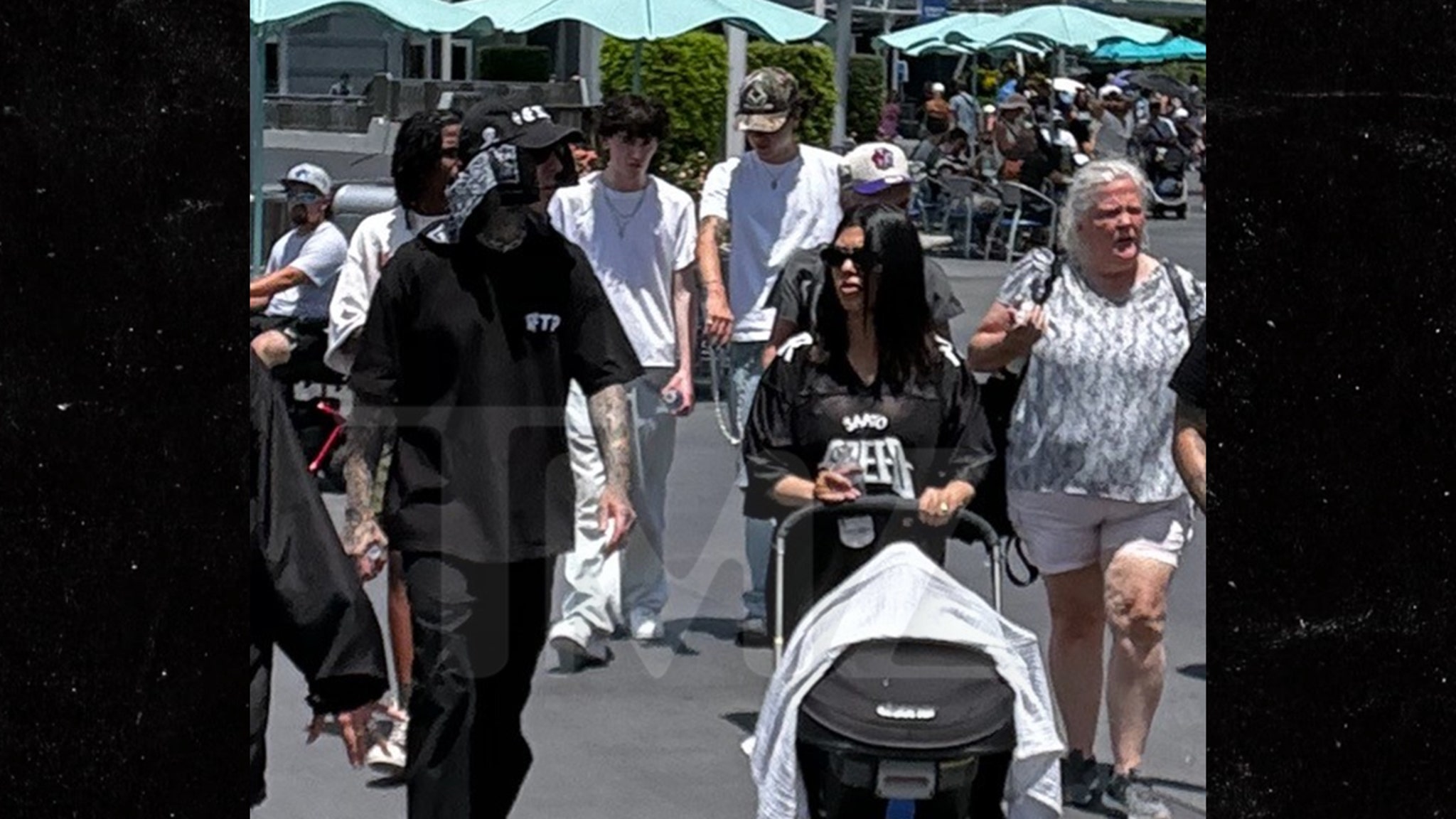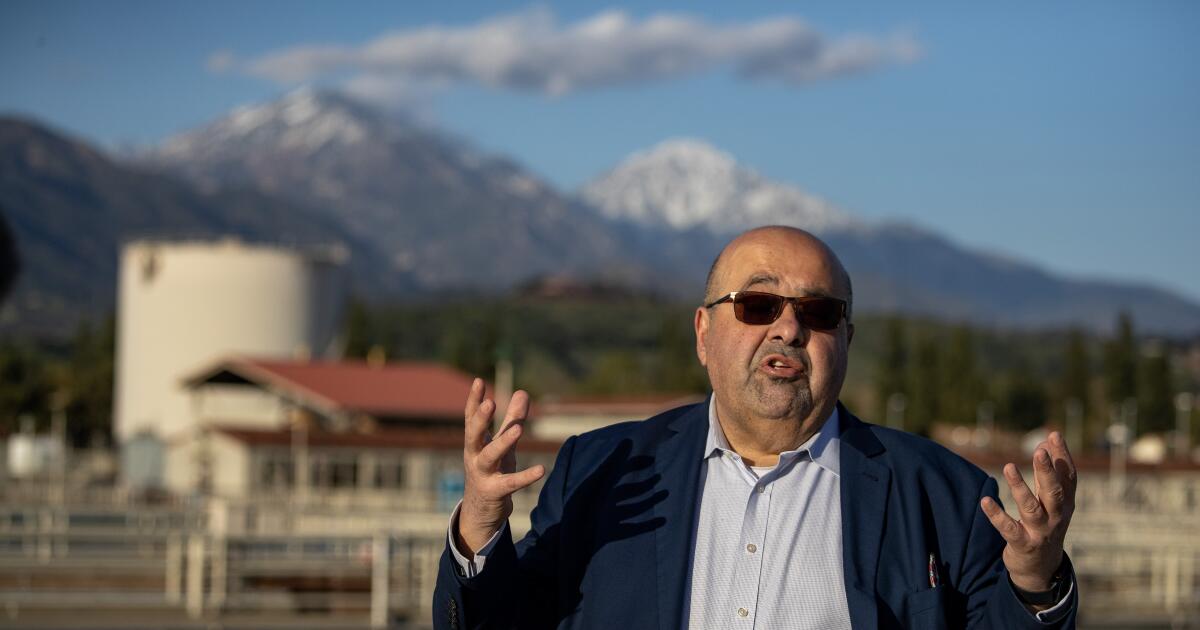Arizona
Analyst: Cardinals QB Kyler Murray Faces Make-or-Break Year

ARIZONA — The Arizona Cardinals approach 2024 with plenty of expectations of improvement from their previous 4-13 record.
While other factors such as an improved roster on both sides of the ball and a full offseason with the same coaching staff are key, the full health of Kyler Murray is the biggest proponent for success this season.
We’ve seen Murray flash his talents plenty of times since becoming the No. 1 overall pick a few years ago. The Cardinals have seen the former Heisman winner win Offensive Rookie of the Year on top of multiple Pro Bowl appearances.
His major ACL injury at the end of 2022 ensured he missed at least the first half of the 2023 season, and despite numerous obstacles working against him, Murray impressed in his final few games heading into the offseason.
Now, with 2024 on the horizon, some analysts believe it’s a make-or-break year for the face of the franchise.
“Murray is an incredible talent, but it’s possible he peaked in 2021. He has limped through much of the last two seasons. There’s plenty of time and money left on his contract, but if he can’t come through again in 2024, the Cardinals could try to move on,” wrote Bleacher Report’s Brad Gagnon.
“The obstacle: Staying healthy. When he last accomplished that to a degree, he was ascending in 2020 and 2021.”
Ultimately, Gagnon says he still does believe in the Cardinals’ passer.
“The offense is becoming less of a problem, especially with Marvin Harrison Jr. on board, and Murray is fully healthy right now. I still believe in the 26-year-old former top pick, and it wouldn’t be a surprise if he got back into the Pro Bowl mix in 2024.”
While the “make or break” debate can certainly be had, the Cardinals should expect some degree of improvement. We saw Murray return for eight games and now will have a full offseason to work under Drew Petzing’s guidance with an arguably improved offense in all areas.
Murray’s impressed nearly everybody in the facility this offseason, you can read more about that here.

Arizona
Family-Owned AriZona Pours Into Fashion Collections And Collaborations

Family-owned AriZona Beverages Pours Into Fashion.
Growing up in an urban setting provided familiar staples resonating with the community and its intrinsic cultural artifacts. Besides streetwear fashion and how the garments are worn, the drink choices have developed a familiarity with the communities.
One of those drinks is the AriZona beverage line, renowned for its iconic 22oz cans, it’s Half & Half: Iced Tea and Lemonade blend, dubbed the “Arnold Palmer,” and the many other flavors that became favorites, including a special edition, can that featured NBA legend and part-time DJ, Shaquille O’Neal. Founded in Brooklyn, N.Y. in 1992, now, AriZona has become more than just a drink; it’s a lifestyle with apparel to appropriate your sartorial mood.
Family-Owned AriZona Beverages collaborates with streetwear label Anti Social Social Club on drink … [+]
Embracing boldness and out-of-the-box ideas, a legacy tied to urban communities, the AriZona lifestyle reflects a sense of adventure and authenticity. As this family brand continues to evolve, its foray into the world of fashion and merchandising has captured the essence of this lifestyle, resonating with fans across the globe.
Wesley Vultaggio, Chief Creative Officer, and Spencer Vultaggio, Chief Marketing Officer, and … [+]
Wesley Vultaggio, Chief Creative Officer, and Spencer Vultaggio, Chief Marketing Officer, also the sons of the founder and owner Don Vultaggio [a 6-foot 9-inch former truck driver], have had the same passion as their father did from day one. They describe it stating, “Producing the AriZona merch has been an exciting journey for us. Our father started it and we’ve kept on with the tradition of introducing exciting merch and point-of-sale items for the trade and consumers. We’re committed to staying ahead of the curve and delivering relevant products that resonate with loyalists, and new fans of the brand.”
Family-Owned AriZona Beverages pours into fashion with The Heritage Collection Puffer Vest..
Giving more flavor to their design palette, AriZona, and its c-suite sibling leaders tap into the essence in which the brand validated its essentiality. “Our design process starts with an ear to the street, tapping into current trends and understanding what our consumers are passionate about. We draw inspiration from streetwear, popular culture, and of course, our iconic beverage label creative.”
“From there, it’s all about collaboration and creativity,” the Vultaggio brothers express. “We work closely with talented in-house designers and established Creatives to bring our vision to life, ensuring that each piece reflects the AriZona ethos and aesthetic. Whether it’s a bold graphic tee, a sleek water bottle, or a limited-edition collaboration, every item in our merch lineup is crafted with attention to detail and a passion for style. We like to explore new ideas and push the boundaries for what’s possible. Our goal is to create merch that looks great and inspires our fans to live life to the fullest.”
Family-Owned AriZona shows off its ski collection.
At the heart of the AriZona lifestyle is a commitment that embraces individuality and celebrates its roots. The Heritage Collection pays homage to AriZona’s iconic status, representing a nod to its origins and timeless appeal. Crafted with care and attention to detail, each product in the collection embodies the heritage while infusing a fresh twist for modern consumers. From classic flavors to timeless designs, the Heritage Collection celebrates what makes AriZona iconic in its bold can designs.
The evolution of AriZona merch has been a journey marked by excitement and creativity. Drawing inspiration from streetwear, popular culture, and the brand’s iconic beverage labels, the design process is a collaborative effort that aims to resonate with loyalists and new fans alike. With an ear to the street, AriZona’s merch lineup reflects the ethos and aesthetic, offering products that inspire fans to live life to the fullest.
Family-Owned AriZona Beverages shows off its ski collection.
Building on its success within skate and surf culture, AriZona’s expansion into the ski/snowboard line is deemed a more natural progression into developing fashion. An active lifestyle and a spirit of adventure capture the essence of this outerwear collection.
The recent launch of the kid’s collection reflects AriZona’s commitment to engaging with the new generation of consumers. As parents themselves, the brand’s founders understand the importance of catering to all ages and demographics. The kid’s collection allows families to share in the AriZona lifestyle together, fostering a sense of community and connection.
AriZona has also collaborated with some of the most iconic brands in the industry, creating significant product drops that connect with fans on a deeper level. From streetwear labels like Anti-Social Social Club to sportswear giants like Adidas, each collaboration celebrates its joint successes and pushes the boundaries of possibilities.
AriZona Beverages x Anti Social Social Club tea set.
“We’ve had the pleasure of teaming up with some incredible brands to create significant product drops that connect with our fans,” the brothers detail. “Our collaboration with Anti-Social Social Club brought together trending streetwear style with our iconic beverages. Our partnership with Adidas Originals infused our bold flavors into their classic silhouettes. Each initiative has been a celebration of our joint successes.”
AriZona’s Black Heritage Field Coat.
By exploring the intersection of art, fashion, and culture, AriZona continues to inspire and excite fans with its innovative partnerships. “Most recently, teaming up with emerging sunscreen brand Vacation Inc., where together we explored the intersection of art, fashion, and classic culture to create a collection that embodied the vintage spirit of AriZona. Collaborations allow us to push the boundaries of what’s possible and connect with our fans in new and exciting ways. We’re always looking forward to what’s next.”
Throughout its evolution, AriZona has remained committed to providing great taste at a great value. As a family-owned and operated business, the brand’s commitment to authenticity and affordability has remained constant. While AriZona has expanded its product lineup and explored new markets, it has stayed true to its roots, delivering high-quality products that resonate with fans worldwide.
AriZona Beverages fleece jacket.
“One thing that has remained constant is our commitment to providing great taste at a great value,” the brothers detail. “Again, we’re family owned and operated, so, most often, talking to the decision-makers. Our board meets daily over lunch, [making] our decisions quickly, collectively, and effectively. From the very beginning, our iconic Big Can at 99 cents has been a staple, offering consumers a delicious beverage at an unbeatable price. But while our commitment to affordability has stayed the same, we’ve also evolved in many ways.”
The Vultaggio brothers continue, “We’ve expanded our product lineup to include a wide range of flavors and beverage options, from teas and juices to water[s] and energy drinks – snacks, and adult beverages. We’ve embraced collaborations and partnerships that have allowed us to connect with new audiences and explore new markets. And through it all, remained true to our roots, staying authentic to who we are as a brand and continuing to deliver the high-quality products that our fans know and love.”
AriZona x Anti Social Social Club collaborative bottle designs.
For the founders of AriZona, personal style is a mix of highs and lows, reflecting its ethos of authenticity and individuality. From the Heritage Blossom Hoodie to the Black Heritage Field Coat, AriZona merch has become a staple in their wardrobes, embodying the bold spirit of the brand.
Wesley Vultaggio concludes, “[We] love a mix of highs and lows. We create pieces we actually want to wear, and like our Dad (and our employees), we wear AriZona merch because we want to, not because it’s mandated. [Spencer wears] the Heritage Blossom Hoodie all the time, while I love the Black Heritage Field Coat. Our father wears an AriZona shirt every day and has a regular cycle of the t-shirts.”
AriZona Beverages hoodie with original AriZona design elements.
AriZona’s reputation as a neighborhood drink with a premium allure has fostered its sartorial ventures, inspiring collaborations and partnerships that reflect its style and taste. By drawing inspiration from its diverse cultural influences, AriZona continues to push boundaries on its fashion and merchandise catalog.
Arizona
Arizona legislature passes contentious budget in face of $1.3 billion deficit

Neither Democratic nor Republican lawmakers were very happy Saturday after spending more than 12 hours voting, passing the state’s budget just two weeks shy of the end of the fiscal year.
Arizona has a $1.3 billion budget deficit looming in the 2024 and 2025 fiscal years and legislators had to figure out a fix by the end of the 2024 fiscal year on June 30.
The 2025 budget, at $16.1 billion, includes significant reductions from 2024’s $17.2 billion. A number of Democratic members and Republicans voted no, saying that they did not have enough time to review the budget or decrying the cuts that were made.
“I feel like this year’s budget seems more focused on getting it done then doing it right,” Rep. Matt Gress, R-Phoenix, said when voting no on the budget Saturday. “I think many of us feel like this does not reflect the shared priorities of Arizonans. I believe this budget is a fiscal tragedy both in terms of process and policy.”
“Our budget is a moral document,” Rep. Mariana Sandoval, D-Yuma, said when explaining her no vote. “I’m sad to see that in the $16 billion budget, our communities are getting crumbs. Those are the wins my colleagues are talking about, crumbs.”
Most of the budget bills barely passed in each chamber.
“Arizonans can rest assured that their state has a balanced budget. I’m thankful for members of the legislature who came together, compromised, and passed this bipartisan agreement,” Gov. Katie Hobbs said in a statement after the passage of the budget. “But I know we still have more work to do.”
Hobbs has not signaled when she intends to sign the budget.
Among the issues Democratic legislators objected to is the inclusion of a plan to allocate $75 million of state opioid settlement funds to the Department of Corrections. That money, which the state got through a lawsuit against pharmaceutical companies in the wake of the opioid crisis, has restrictions on how it should be used. Democratic Attorney General Kris Mayes has threatened to sue the governor and lawmakers if the proposal makes it into the final version of the budget.
Mayes believes that using the money to “backfill holes” in the Department of Corrections operating budget would put the $1.4 billion the state is set to receive in the settlement at risk of legal challenges. However, Mayes’ office has previously described transfers to the DOC as a qualified usage of the settlement money.
The AG’s Office did not respond to a request for comment Saturday night.
K-12 public education
The budget provides modest increases in funding to public district and charter schools, as well as to cover student transportation costs, but Beth Lewis, executive director of Save Our Schools Arizona, said it wasn’t enough to keep up with inflation.
SOS Arizona is a public education advocacy group focused on opposing the expansion of private school vouchers, known as Empowerment Scholarship Accounts.
As part of their final day of session, lawmakers also passed a measure that lifts the “Aggregate Expenditure Limit” for Arizona schools for the next fiscal year. Education advocates had been asking the legislature to make that a permanent lift, yet once again lawmakers lifted the AEL temporarily.
The AEL, placed in the state constitution by voters in 1980, means that without a legislative waiver, schools would have been forced to make massive cuts to their budgets. Now that has been temporarily averted, public school advocates are turning their attention to a more lasting fix so the legislature does not have to scramble to issue a waiver every year.
The budget also includes an additional $29 million in one-time additional assistance to public schools.
GET THE MORNING HEADLINES DELIVERED TO YOUR INBOX
Empowerment Scholarship Accounts
Some Democratic members were pleased that the budget places new regulations on the ESA program, including requiring fingerprinting for staff who work unsupervised around children. Other Democrats argued that the new regulations didn’t go far enough. They said the fingerprinting requirement, for example, is not as stringent as that for public school teachers.
“While this bipartisan budget delivers reforms to the ESA program, they are not enough,” Hobbs said in her post-passage statement. “I stand committed to bringing much needed accountability and transparency to the unsustainable ESA program that significantly contributes to the state’s budget deficit.”
Many Republicans decried the new rules as government interference in private schools.
Arizona recently expanded universal Empowerment Scholarship Accounts to allow all K-12 students in the state to attend private school or to be educated at home using public money, even if that student’s parents were already paying for them to attend private school before a voucher was available.
Critics of the expanded program — which has gone from around 12,000 participants to more than 75,000 — have repeatedly called for it to be capped or nixed all together, calling it a subsidy for the wealthy at the expense of everyday Arizonans.
While proponents of the program, like Mesa Republican Rep. Barbara Parker, claim that it saves the state money, that isn’t the case. A recent report from the nonpartisan Grand Canyon Institute found that the expanded universal portion of the program cost Arizona $332 million in the 2024 fiscal year, a number expected to grow to $429 million next year.
In budget discussions on Thursday, Democratic critics of the program repeatedly pointed out that they could wipe out a big chunk of the state’s budget deficit by eliminating or scaling back the universal expansion.
“We could easily solve this deficit by reining that in,” said Democratic Sen. Anna Hernandez, of Phoenix, later calling cuts to other important programs, but not to ESAs, “fiscally irresponsible.”
Public education advocates argue that vouchers take money away from public schools, when Arizona public schools are some of the worst funded in the nation.
The new budget doesn’t eliminate or put a cap on the ESA program, but it would stop public school students from using ESA funding for educational purposes over summer break, for a modest savings of $2.5 million annually.
It also calls for annual audits of a random sample of ESA accounts to ensure parents comply with the rules of the program, but Democratic Sen. Priya Sundareshan said during a Senate Appropriations Committee meeting on Thursday that the new guardrails for ESAs were far from sufficient. She pointed out that a single student’s account could not be selected for review more than once in a five-year period.
Road construction projects
Lawmakers delayed many road construction projects set to begin in the next few years, causing consternation for municipal leaders who were counting on the highway and street improvements.
Katy Proctor, intergovernmental affairs director with the city of Maricopa, told lawmakers during a Senate Appropriations Committee meeting on Thursday that the city was extremely disappointed about the delay in funding for construction of an overpass at the intersection of State Road 347 and Riggs Road. More than 57,000 vehicles travel through that intersection daily, she said, and it’s ranked as the fourth-most dangerous intersection in the state highway system. Most accidents that happen there involve rear-end crashes and left turns, which she said would be eliminated by the project.
Also pushed back to 2028 is a $108 million project that was set to widen Interstate 10 between State Road 85 and Citrus Road. The budget also reduces funding to the Arizona Department of Transportation for pavement rehabilitation by $41 million.
Some projects did make it into the state’s budget.
Those projects include $10 million for a traffic interchange between Interstate 10 and Cortaro Road in Tucson; $8.2 million for work on a road between the Douglas port of entry and State Route 80; $35.5 million for an emergency evacuation bridge in Lake Havasu City; and $18 million for improvements to an intersection on Route 347 and Casa Blanca Road near Casa Grande.
Water policy
The budget eliminates the entire $333 million budget meant to be allocated in 2025 to the Water Infrastructure Finance Authority of Arizona, a fund created in 2022 with broad bipartisan support to help shore up Arizona’s water future by bringing in water from out of state.
Arizona leaders, along with the heads of other southwestern states that are in the throes of a decades-long drought, are concerned about the area’s water future, but Republican Rep. Alexander Kolodin, of Scottsdale, told the Arizona Mirror in December that he believed WIFA funding was a good place to cut.
Kolodin said that there are so many restrictions placed on the money that “there are no good projects to fund.”
Opioid settlement
One of the sticking points in the budget — especially for Democrats — was a plan to use $75 million in funds that the state received from a lawsuit against the makers of opioids who were found partially at fault for the opioid crisis.
Democratic Attorney General Kris Mayes previously told the Mirror that this use of money was illegal and could “put Arizona’s entire $1.4 billion in opioid funds in legal jeopardy.”
The funds are meant to be used to combat the fentanyl crisis, not backfill the Department of Corrections’ operations budget, Mayes said during an interview this week with 12 News.
“That’s illegal. I will fight it,” Mayes said. “If I have to go to court to fight it, I will do that and we will win. And, by the way, I am not giving that money to them. It’s in my bank account at the Attorney General’s Office. It is not going anywhere.”
Mayes went on to say that if she had to, she would sue Democratic Gov. Katie Hobbs to stop the state from using that money improperly.
Higher and adult education
Arizona’s colleges and universities will see significant cuts to their budgets.
Arizona State University will see $10.9 million in cuts; Northern Arizona University will lose around $4 million; and University of Arizona’s state funding will be cut by around $6.5 million.
The state’s community colleges will see a cut of around $54 million.
The budget would also eliminate programs, beginning in 2026, that were meant to help Arizona’s workers, including the Continuing High School and Workforce Training Program, Adult Workforce Diploma Program and the Community College Adult Education Workforce Development Program.
Infighting
Saturday was full of long breaks between voting as Republicans and Democratic members tried to round up the votes needed to pass the budget.
Even with some of the changes, members of both parties voiced their displeasure with the process and with the items included in the budget that were meant to get buy-in from both parties.
“This budget was a trainwreck. This process was a trainwreck. It has bastardized the way the legislative process is supposed to work and I vote hell no!” Kolodin said, after noting that rank and file Republicans were given a “thousand page” budget document only three days ago.
Democratic members voiced similar concerns Saturday.
“Yes, some of us were included in many discussions and some of us were not and I was able to see that,” Rep. Betty Villegas, D-Tucson, said, adding that the state’s Low Income Housing Tax Credit program lost funds in this year’s budget. “So it really isn’t a win.”
Others focused on the “wins” they did get in the budget and emphasized that lawmakers are working in a divided government.
“There are plenty of things I am unhappy with in it, there are several things I am happy about and deserve recognition in this process,” Rep. Judy Schwiebert, D-Phoenix, said. The Phoenix Democrat touted $4 million for school lunches, $2 million to the Arts Commission, money for adult education programs, the AEL extension and a $15 million deposit to the state’s Housing Trust Fund as major wins.
That still did not stop a number of Democratic lawmakers from voting no along with some of their Republican colleagues.
Online, lawmakers began taking shots at each other and casting blame for what they saw as a bad budget.
The far-right Arizona Freedom Caucus took to X, formerly Twitter, to claim that the “swamp” and “establishment Republicans” were blaming them for the budget.
“The reality is that this is what happens when weak Republicans negotiate a budget in secret with Democrats,” the post said, adding that they brought their ideas to leadership, who “rejected the changes instantly without considering them, and then spent the rest of the day attacking, defaming and insulting members of the Freedom Caucus for not just blindly following orders.”
Arizona
‘If you fly, we can’t’: Why you can’t fly drones near wildfires in Arizona and elsewhere

Ironwood Fire burns near Interstate 17 at Cordes Junction
A wildfire erupted after a motor home with ammunition caught fire, causing the shutdown of the northbound lanes of I-17 on June 14, 2024.
Wochit
Operations to help clear the Ironwood Fire were temporarily put on hold Friday evening due to a drone in the area, according to a post on X by the Bureau of Land Management’s Arizona Fire Management.
The Ironwood Fire started about 4 p.m. Friday after a motor home caught fire and ammunition inside exploded, according to the Arizona Department of Public Safety.
The northbound lanes of Interstate 17 were temporarily shut down and officials said the fire was completely contained by Saturday morning.
“If you fly, we can’t,” the graphic on the post reads. “Recreational drones near wildfires are not safe.”
Here is what to know about why drones cannot be flown in forest fire zones.
‘If you fly, we can’t’ campaign
According to the U.S. Forest Service, “If you fly, we can’t,” stresses the public not to fly drones near or over wildfires.
The agency said federal, state and local wildland fire management agencies, along with the Federal Aviation Administration, urged the public not to fly drones near or over wildfires because they pose “serious risks” to public safety personnel and alter the effectiveness of those fighting wildfires.
The agency said aircraft that fight fires fly only a couple hundred feet above the ground, at the same altitudes as drones. This could create the potential for a midair collision or a distraction for the pilot, which could result in fatalities. Unauthorized flyers could also fall from the sky and cause serious injuries or death to firefighters on the ground.
The Forest Service said suspending firefighting operations could allow wildfires to grow larger and threaten lives, property and valuable resources.
During 2019, the service documented at least 20 instances where unauthorized drones were flown over or near wildfires, including in Arizona. These instances resulted in firefighting operations having to shut down temporarily nine times.
Flying a drone near a wildfire and interfering with wildfire efforts could lead to civil penalties, including fines up to $25,000 and potential criminal prosecution, according to the Forest Service.
Wildfire map: Track where fires are burning in Arizona in 2024
-

 News1 week ago
News1 week agoIsrael used a U.S.-made bomb in a deadly U.N. school strike in Gaza
-

 World1 week ago
World1 week agoRussia-Ukraine war: List of key events, day 833
-

 Politics1 week ago
Politics1 week agoGeorge Clooney called White House to complain about Biden’s criticism of ICC and defend wife’s work: report
-

 Politics1 week ago
Politics1 week agoNewson, Dem leaders try to negotiate Prop 47 reform off California ballots, as GOP wants to let voters decide
-

 World1 week ago
World1 week ago‘Bloody policies’: Bodies of 11 refugees and migrants recovered off Libya
-

 Politics1 week ago
Politics1 week agoEmbattled Biden border order loaded with loopholes 'to drive a truck through': critics
-

 World1 week ago
World1 week agoDozens killed near Sudan’s capital as UN warns of soaring displacement
-

 Politics1 week ago
Politics1 week agoGun group vows to 'defend' Trump's concealed carry license after conviction















